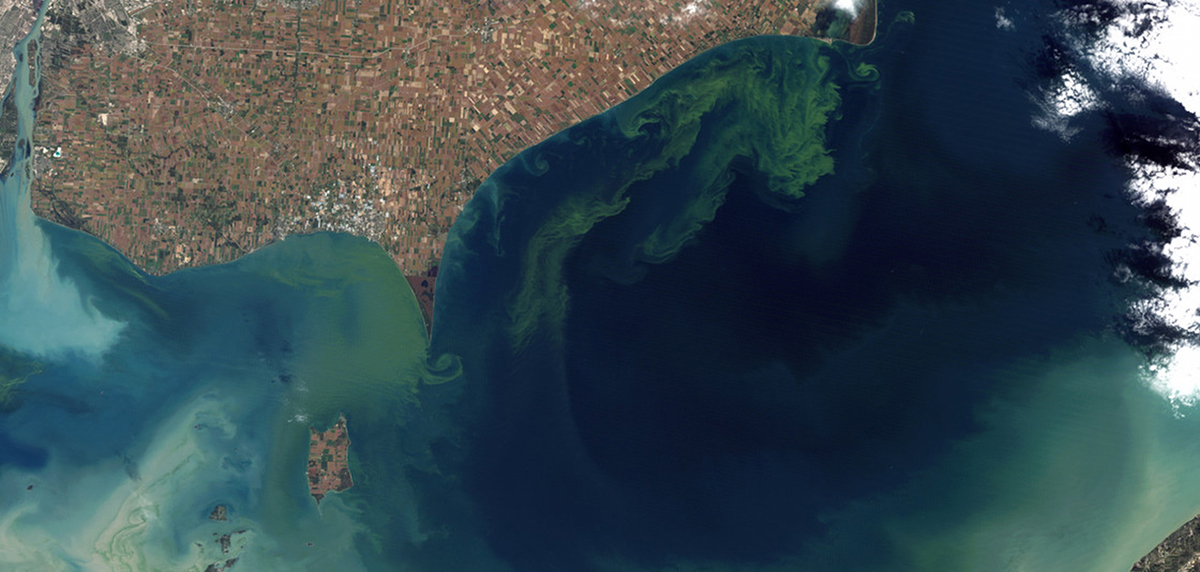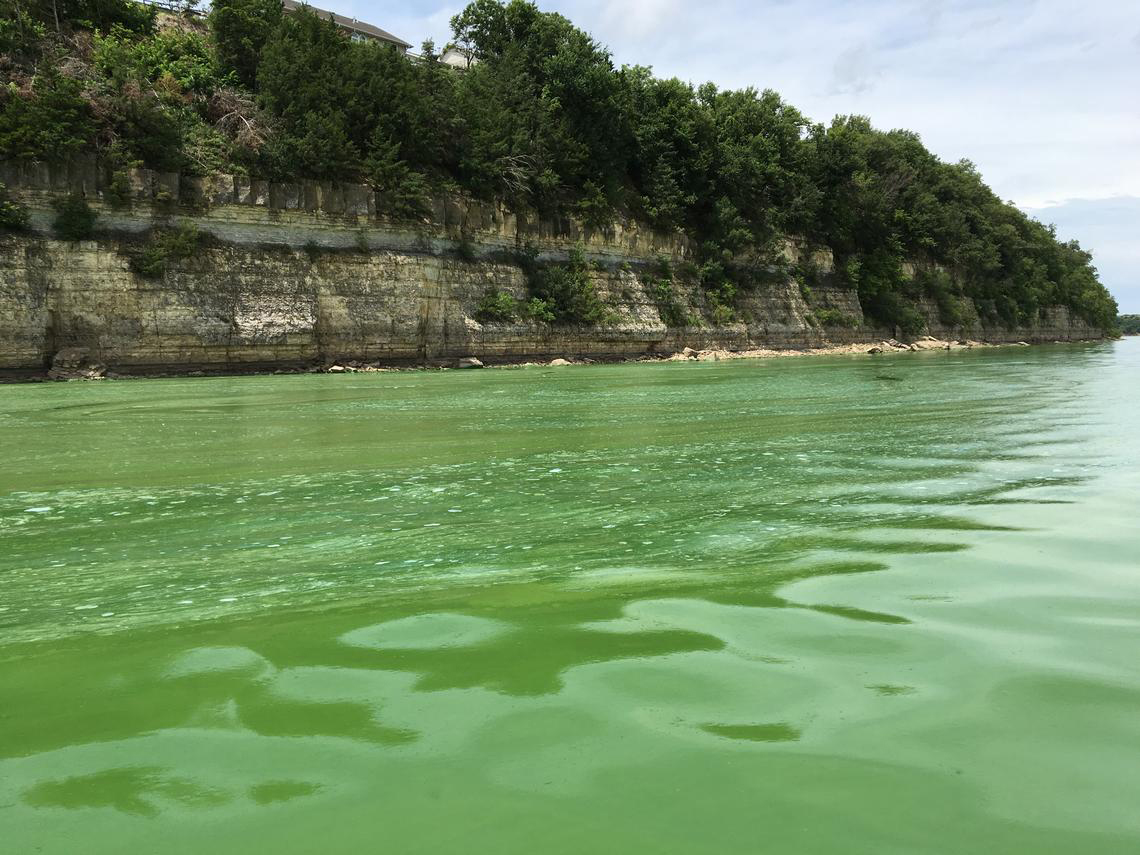For her capstone project, graduating environmental resource management student Bryn Wambaugh investigated the work being done in the Shaver’s Creek watershed by the Shale Hills Critical Zone Observatory. We are sharing a series of Bryn’s articles, written with the public in mind, to educate readers while illustrating the great research done at the Shale Hills CZO and supported by Shaver’s Creek.
Nutrient pollution is a major problem affecting Pennsylvania’s streams, waterways, and ultimately entire watersheds. It is the excess of chemicals, mostly nitrogen and phosphorus, in the air or water that cause environmental problems (U.S. EPA, 2019). Nutrient pollution adversely affects stream and wildlife health and causes economic issues. It is important that the Shale Hills CZO is monitoring the health of streams in the Shaver’s Creek watershed because of these outcomes.
Nutrient pollution adversely affects health in our streams and downstream in the Chesapeake Bay, including the aquatic organisms that live in streams, through eutrophication and algal blooms. Eutrophication is set in motion when excess nutrients enter the water causing algae to grow. This excess algae blocks out sunlight, and, thus, decreases dissolved oxygen (DO). The amount of DO in the water affects what organisms are found in streams. If eutrophication continues causing DO to decrease, the water can become hypoxic (a lack of oxygen) and create a lifeless “dead zone” in which there is not enough oxygen in the water to sustain life (USGS). 58,000 metric tons of nitrate enter the Chesapeake Bay every year, and Pennsylvania is responsible for 44% of this pollutant (Osenbach 2019). Nitrate that enters the Bay contributes to eutrophication and dead zones. When excess nutrients in streams create cyanobacteria, Harmful Algal Blooms (HABs) hurt stream and animal health. Algal blooms become harmful when they are caused by cyanobacteria. Cyanobacteria is one of the only known freshwater algae that can cause adverse health impacts to humans as well as marine animals (USGS). When there is too much algae on top of the water, the amount of dissolved oxygen decreases because aquatic plants cannot photosynthesize. These dead zones create a generation-long effect in reducing fish populations. Many fish, like sea bass, go to the Bay to reproduce and live as juveniles. Nutrient pollution negatively impacts the health of our streams, aquatic animals, and the Chesapeake Bay, but what about our farm animals and pets?

As well as stream health and the aquatic animals living in the water, nutrient pollution can adversely affect other wildlife. HABs kill waterfowl that frequent the stream and prey on the fish in it. This is especially devastating because waterfowl are slow to mature and produce few offspring, which means that HABs will impact the population for years to come (U.S. National Office for Harmful Algal Blooms). Within an hour of swimming in or ingesting water from a stream affected by HABs, the liver, kidneys, or brain of an animal is affected. Poisoned animals may develop vomiting, diarrhea, panting, drooling, or weakness, or may stop eating or show other signs (NC State University, 2019). The immediate health effects of HAB–contaminated stream water on dogs, cattle, and other domesticated animals is gruesome. These impacts can reach to grazing animals near contaminated water and other wildlife.
But how does nutrient pollution affect us? Nutrient pollution can cause major economic issues. Nutrient pollution has the potential to negatively impact tourism and fishing, increase water treatment costs, and decrease property values. HABs come in the form of a red tide, and because of this they have the potential to decrease tourism. Activities like boat rides are also less desirable. This can cripple coastal towns that depend on tourism (NOAA). HABs kill off fish, and therefore negatively affect the fishing industry. They can also impact aquaculture and fish farms, furthering their negative economic effects. Oysters are struggling to survive in the Chesapeake Bay because of this pollution, and a disappearing oyster population could make pollution worse, creating a domino effect that will kill even more fish and destroy livelihoods. Water contaminated by HABs can also make people sick, and the illness can be fatal if not treated. Because of this, water treatment costs increase (U.S. EPA, 2019). HABs and algal blooms can decrease property values because of how unsightly they are (USGS).

Nutrient pollution is a growing concern around the world, the U.S., and Pennsylvania. The research gathered by the Shale Hills CZO can help us better understand our own watershed. This will be discussed in other articles in this series.
References
- NC State University. (2019, August 13). Toxic algae blooms harmful to pets. Retrieved March 04, 2021, from https://cvm.ncsu.edu/algae-blooms/
- NOAA. What is a harmful ALGAL bloom?: National Oceanic and Atmospheric Administration. Retrieved March 04, 2021, from https://www.noaa.gov/what-is-harmful-algal-bloom
- Osenbach, E. (2020). Sources of nitrates in the Shaver’s Creek Watershed in the Susquehanna River Basin [Unpublished Senior Thesis, The Pennsylvania State University]
- U.S. EPA. (2019, February 04). The Issue. Retrieved March 04, 2021, from https://www.epa.gov/nutrientpollution/issue
- U.S. National Office for Harmful Algal Blooms. HAB impacts on wildlife. Retrieved March 04, 2021, from https://hab.whoi.edu/impacts/impacts-wildlife/
- USGS. Nutrients and Eutrophication. Retrieved March 04, 2021, from https://www.usgs.gov/mission-areas/water-resources/science/nutrients-and-eutrophication?qt-science_center_objects=0#qt-science_center_objects
